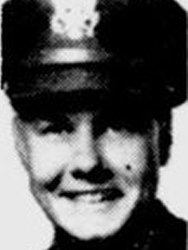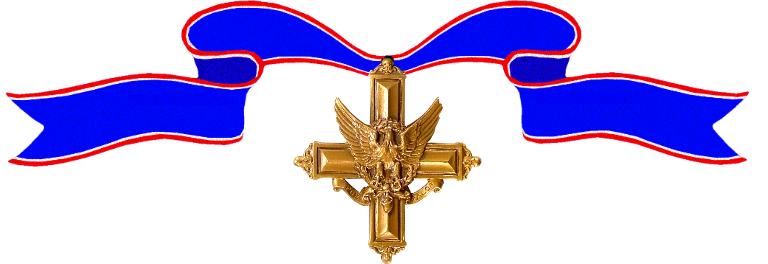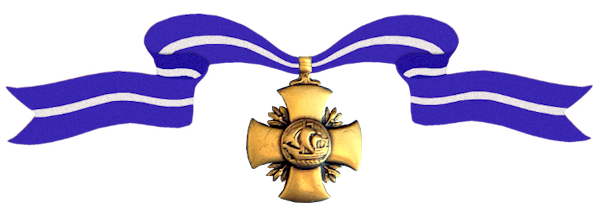The President of the United States of America, authorized by Act of Congress July 9, 1918, takes pleasure in presenting the Distinguished Service Cross to First Lieutenant (Air Corps) John Edward Rairigh (ASN: 0-753303), United States Army Air Forces, for extraordinary heroism in connection with military operations against an armed enemy while serving with the 4th Emergency Rescue Squadron, TWENTIETH Air Force, in off the Island of Honshu, Japan, on 30 July 1945. First Lieutenant Rairigh courageously set out to rescue a downed pilot twelve miles off the northern cost of Honshu, Japan, knowing full well that completion of the mission would mean ditching his plane under adverse conditions and after dark in the open sea in the vicinity of the Task Force from which he had started. The rescue of the downed pilot was accomplished under fire from an enemy destroyer. Shortly after take-off he was advised that one of his fighter escorts had been shot down in a position relatively nearer the Japanese destroyer than that of the first rescue. With complete disregard for his own safety, Lieutenant Rairigh landed and commenced the rescue of the second pilot while under continuous fire by automatic weapons from the enemy destroyer. When the line which was being used to bring the second downed pilot aboard parted, he circled his plane down wind towards the approaching destroyer in order to make an up-wind approach towards a more favorable rescue point. With the second pilot safely aboard, the plane was forced to fly through heavy anti-aircraft fire on reaching the shore line on the return trip. Upon arrival over the Task Force and although never having made an open sea landing at night, he skillfully made use of the meager aids which could be afforded under the circumstances by the ships available and set his plane down with no injury to his crew or the rescued pilots. Lieutenant Rairigh’s intrepid courage and heroic actions in enemy territory in the face of such grave danger with disregard for his own personal safety, reflect the highest credit upon himself and the United States Army Air Forces.

–
Cemetery:
Awards Received
-

Distinguished Service Cross
-

Navy Cross
-
Distinguished Service Cross
Service:
United States Army Air ForcesRank:
First Lieutenant (Air Corps)Batallion:
4th Emergency Rescue SquadronDivision:
20th Air ForceAction Date:
July 30, 1945
Provisional Headquarters, U.S. Army Air Force-Middle Pacific, General Orders No. 31 (September 18, 1945) -
Navy Cross
Service:
United States Army Air ForcesRank:
First Lieutenant (Air Corps)Batallion:
4th Emergency Rescue SquadronDivision:
20th Air ForceAction Date:
July 30, 1945
Commander 3d Fleet: Serial 0455 (August 4, 1945)The President of the United States of America takes pleasure in presenting the Navy Cross to First Lieutenant (Air Corps) John Edward Rairigh (ASN: 0-753303), United States Army Air Forces, for extraordinary heroism and distinguished service as Senior Pilot of a PBY-5A Rescue Plane in the 4th Emergency Rescue Squadron, TWENTIETH Air Force, U.S. Army Air Forces, in action in the Sea of Japan on 30 July 1945. First Lieutenant Rairigh courageously set out to rescue a downed pilot twelve miles off the northern cost of Honshu, Japan, knowing full well that completion of the mission would mean ditching his plane under adverse conditions and after dark in the open sea in the vicinity of the Task Force from which he had started. The rescue of the downed pilot was accomplished under fire from an enemy destroyer. Shortly after take-off he was advised that one of his fighter escorts had been shot down in a position relatively nearer the Japanese destroyer than that of the first rescue. With complete disregard for his own safety, Lieutenant Rairigh landed and commenced the rescue of the second pilot while under continuous fire by automatic weapons from the enemy destroyer. When the line which was being used to bring the second downed pilot aboard parted, he circled his plane down wind towards the approaching destroyer in order to make an up-wind approach towards a more favorable rescue point. With the second pilot safely aboard, the plane was forced to fly through heavy anti-aircraft fire on reaching the shore line on the return trip. Upon arrival over the Task Force and although never having made an open sea landing at night, he skillfully made use of the meager aids which could be afforded under the circumstances by the ships available and set his plane down with no injury to his crew or the rescued pilots. His skill and courage were at all times in keeping with the highest traditions of the United States Naval Service.

